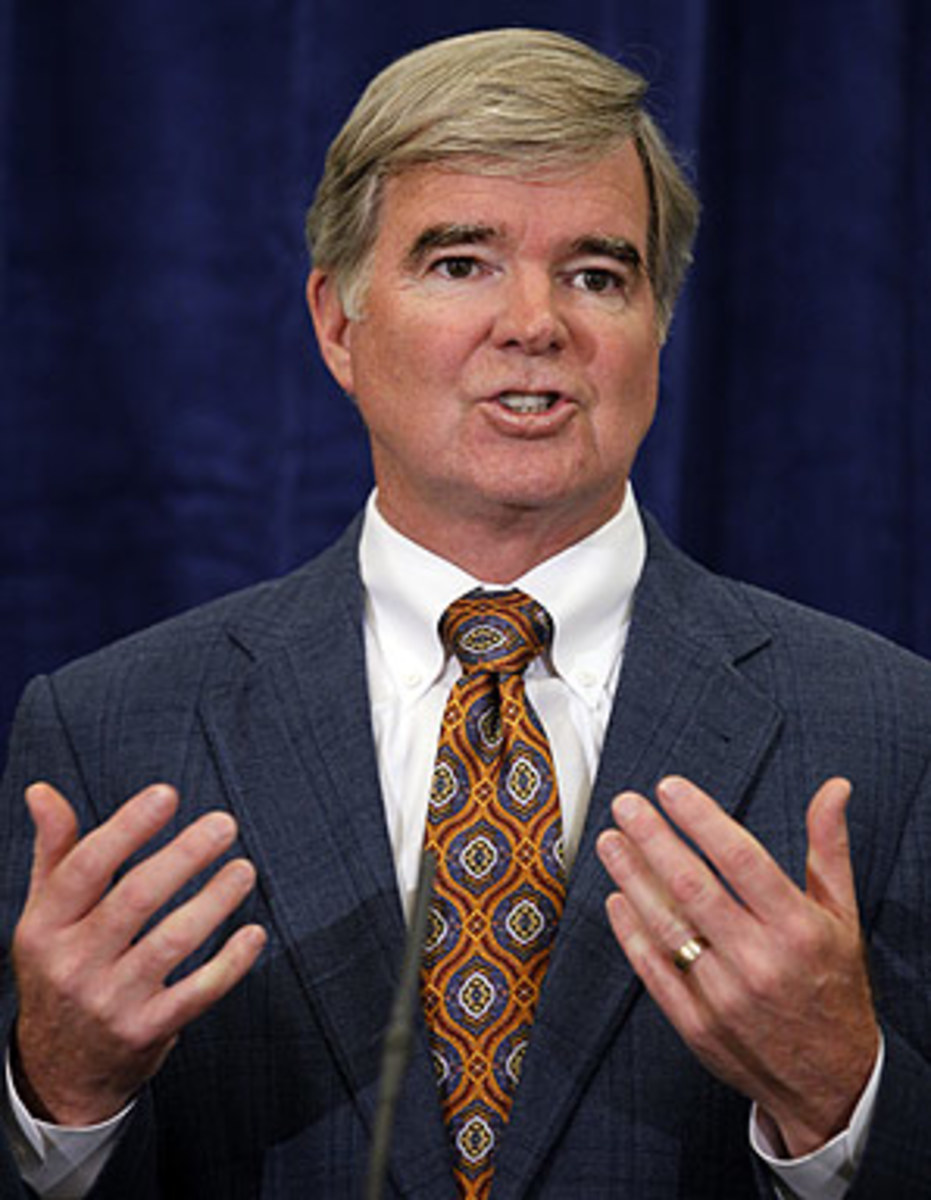NCAA's well-intentioned APR increase still has major flaws
An organization that often moves at a snail's pace needed fewer than 24 hours after two days of reform discussions to put words into action, and a system that's often accused of putting money first (and second and third) now has a more rigorous academic check to help provide balance.
That said, anytime you boil down academic progress at over 340 Division I basketball programs into a single number, you're asking for trouble. APR figures are generated by a formula with more loopholes than the U.S. tax code and are scaled the same way for everyone without regard for school size, athletic department finances, or racial and socioeconomic demographics of athletes. That's completely misguided, and as constructed, feels like an academic version of the RPI.
You know the RPI, that annual whipping boy of a calculation that simultaneously is disavowed by the NCAA as a selection criteria (technically true) and so impactful in terms of seeding and at-large selection (in terms of top-50 wins and schedule strength) that it's created a cottage industry of projections. The RPI formula, with an absence of scheduling regulations and the prevalence of guarantee games nationwide, remains heavily slanted toward major-conference teams. With the NCAA tournament money and quantifiable impact on recruiting at stake each year, big programs have massive incentive to game the system in their favor and smaller programs are at a profound disadvantage in trying to meet the same standards of inclusion.
Those themes may all sound very familiar in 2015-16 when these new APR regulations take effect.
There is no question the new APR requirements will hit smaller programs harder. These schools, especially in leagues like the SWAC and MEAC, don't have the budgets to provide the academic support necessary to help players remain on track as defined by the APR. It's no coincidence that many of these teams spend most of November and December away from campus, essentially as fundraising arms for the universities as they collect guarantee checks and 40-point losses. (Whether these programs should continue as Division I concerns is a related question, but for now they are classified as such, so any rules created need to account for their situations, too.)
What kind of impact are we talking about? Per the NCAA's own APR database, a total of three SWAC and MEAC schools (out of 21) would have been eligible to play in the NCAA Tournament if the new standard of 930 was applied to their current four-year averages. Your MEAC tournament final would be North Carolina A&T vs. Hampton. And faux congratulations to Alcorn State, which would win the SWAC auto bid by default. In the Ohio Valley Conference, also one of the nation's poorest, half of its members would be ineligible. Shouldn't a system do a better job of helping these schools educate players rather than taking away opportunities because they're underfinanced?
There's also no question, much like the RPI, that using the APR in a vacuum has flaws. The overarching goal of academic progress should be to ensure graduation, but there is a low correlation to the official NCAA "Graduation Success Rates," because you can't compare a snapshot of current academic standing against graduation rates that take six years to compile. More important, the way the formula accounts for transfers (who are a plus if they have a 2.6 GPA and a minus otherwise) and early entrants into the NBA draft (Kentucky thanks you for finishing your freshman classes, John Wall) puts responsibility on programs where they don't even control the choices being made by their athletes. The NCAA absolutely needs to address these inconsistencies, as two identical APRs currently can mean very different things.
And, sadly, there's probably no question that with the NCAA tournament at stake, there is now even more incentive for academic fraud to be perpetuated in order to keep a program eligible. The idealism of the college experience is nice, but not when billions of dollars in TV money and millions of dollars in coaching contracts are involved. Historically, grade changing and other malfeasance typically was the province of star players, so they could remain eligible. Now everyone's grades matter and there's way too much reward to assume that no one will risk cheating to make sure someone -- anyone -- doesn't jeopardize a program's NCAA chances.
So, yes, Thursday was a decent day for the NCAA, but it's not unfair for cynics to think the quick reaction at the presidents' retreat is as much a p.r. move as a well-thought out, long-term solution. The NCAA has been getting crushed by an avalanche of bad publicity and a perception that it no longer can effectively govern major-college athletics. Creating a stronger link between academic performance and athletics should be the main mandate of Mark Emmert's tenure, and he needs to take individual moments like this, improve them and cobble them into a long and painful process of NCAA reform.
Hopefully, that reform will be tailored to account for the differences across the NCAA's Division I members, which would be a much fairer landscape than the one announced on Thursday. For now, maybe we should dub this change the "Piñata Rule." Threatening to take away the NCAA tournament is a big stick to wave around, but the NCAA remains mostly blind while it's swinging it.





